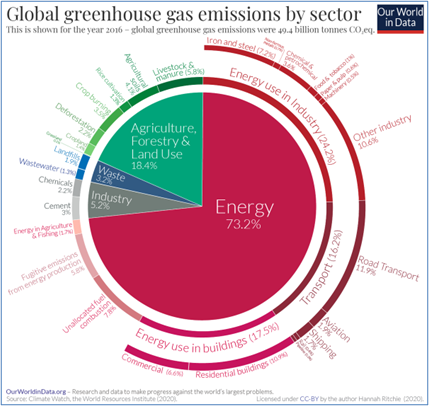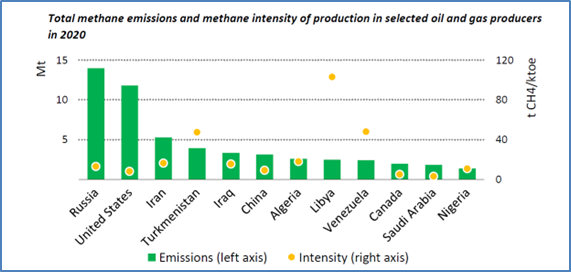Finding a sensible and affordable path to net-zero greenhouse gas emissions
NOTE: This is this first of a three-part series that examines the components required to achieve a sensible and affordable transition to net-zero GHG emissions. The second installment will be published in September and the third in October.
 By Yogi Schulz
By Yogi Schulz
Yogi Schulz has more than 40 years of information technology experience in various industries, including the energy industry; his specialties include IT strategy, web strategy, and systems project management. His forthcoming book, co-authored by Jocelyn Schulz Lapointe, is “A Project Sponsor’s Guide for Projects: Managing Risk and Improving Performance.”
Achieving net-zero emissions is a critical goal in the fight against climate change. It refers to the balance between the amount of greenhouse gases (GHGs) emitted into the atmosphere and the amount removed.
To reach net-zero, a comprehensive set of energy transition actions is required across most sectors of the economy, by almost all nations of the world, and with leadership from various multi-national organizations.
The cacophony of net-zero proponents and skeptics has become disorienting and demotivating for many. The usual debates about who should pay, how soon the goal must be achieved, and how close to net-zero is required often distract from action.
A net-zero implementation plan should consist of components designed to avoid public debt and create a pace of change that households and businesses can absorb, including:
- A significant revenue-neutral carbon tax.
- No subsidies for electric vehicles or their cousins, changes to production technologies, or critical minerals.
- The definition of renewable electricity generation is broad enough to include geothermal, nuclear, solar, storage, tidal, and wind.
- No subsidies for designing, building, and operating renewable and non-renewable electricity generation.
- No subsidies for producing fossil fuels or materials for renewable energy.
- No decommissioning of fossil fuel electricity generation before the end of the station’s life.
- No dispatch preferences for renewable electricity.
- Import duties for products not demonstrating an acceptable action level to reduce GHG emissions.
- Subsidies for basic research into GHG reduction technologies.
- Building code revisions, to reduce energy consumption and GHG production.
- Modest tax credits for investments reducing GHG emissions.
- Annual motor vehicle licence fees proportional to engine power.
Decarbonizing the energy sector
Setting target dates for achieving net-zero is a distracting and misleading fantasy, because we simply do not know how long it will take to make material progress on the necessary actions. Pushing for faster action — by means of enormous subsidies and draconian regulations — is more likely to be costly and disruptive than helpful.
These text and charts illustrate the sheer scale of the net-zero challenge.
The fossil fuel energy production and consumption sectors contribute 73 percent of GHG emissions in the Global GHG emissions by sector chart below. If we are to achieve net-zero emissions, it will be essential to transition fossil fuel-based energy consumption to renewable and clean energy alternatives. That means rapidly scaling up the deployment of all forms of electricity production and management, including:
- Geothermal, hydro, nuclear, solar, tidal, and wind electricity generation.
- Advanced electricity storage technologies and grid infrastructure.
- Electricity grid interconnects, using intermittent renewable electricity better and increasing overall electricity reliability.
This transition represents a mammoth undertaking, with multiple risks that will take many years and require annual investments on the order of billions of dollars. Fossil fuels are pervasive because of their many advantages, including low cost and high energy density.
The chart below (Source: Global GHG emissions by sector, OurWorldinData.org) summarizes GHG emissions sources across all sectors of the global economy.

Fossil fuel production contributes 6 percent to GHG emissions in the Global GHG emissions by sector chart above. Production will continue for the foreseeable future — well beyond when net-zero emissions are achieved. The industry has reduced GHG emissions intensity per barrel produced, and continues to reduce its emissions.
However, a few countries can improve their performance significantly, as illustrated in the methane emissions chart below(Source: IEA says oil, gas methane emissions down 10 percent in 2020 as output fell, Reuters). Improvements consist of turning methane venting into flaring, and turning flaring into sales of natural gas.

Criticizing energy investors or encouraging divestment does not advance the energy transition, and may lead to electricity outages.
Electrifying transportation
Transportation generates 16 percent of total GHG emissions, as illustrated in the Global GHG emissions by sector. Shifting from internal combustion engine vehicles to electric vehicles and other modes of transportation is crucial. This transition requires:
- The widespread deployment of EVs.
- Research and development to enhance battery performance while reducing cost and weight.
- Significant mining investment for critical minerals.
- Considerable elapsed time for mine permitting and construction.
However, this transition does not require the following:
- More than a modest charging infrastructure because most usage is for commuting. Most commuters can charge EVs overnight at home.
- Financial incentives for EV adoption because most vehicle owners buy a new vehicle every few years, and the incremental cost for EVs is narrowing.
Promoting sustainable modes of transport like walking, cycling, ride-sharing and public transit can further reduce GHG emissions.
Reducing the GHG emissions from commercial trucking can be addressed as follows:
- Transitioning long-distance trucks to hydrogen. Batteries are not feasible due to their weight.
- Transferring some truckloads to railways.
- Transitioning short-distance trucks to batteries.
Reducing the GHG emissions from railway freight can be addressed by transitioning some high-traffic rail lines to electricity, as is the case in Europe, and by utilizing hydrogen for fuel.
Focusing the transition exclusively on EVs — while excluding or ignoring hybrids, hydrogen, liquefied petroleum gas, and lower-power, improved efficiency internal combustion engines — will most likely extend the transition.
This chart (Source: Carbon Footprint of Tourism) compares carbon dioxide emissions for various transportation modes using fossil fuels. Bicycles and walking have no emissions.

Expanding the forms of transportation with low or no CO2 emissions requires urban infrastructure redevelopment toward the “15-minute city” concept. That redevelopment will take time.
Decarbonizing the energy sector and electrifying transportation are two significant components of a sensible and affordable path to net-zero greenhouse gas emissions. I will present more components in the next instalment of this series.
R$
Events For Leaders in
Science, Tech, Innovation, and Policy
Discuss and learn from those in the know at our virtual and in-person events.
See Upcoming Events
You have 0 free articles remaining.
Don't miss out - start your free trial today.
Start your FREE trial Already a member? Log in
By using this website, you agree to our use of cookies. We use cookies to provide you with a great experience and to help our website run effectively in accordance with our Privacy Policy and Terms of Service.





